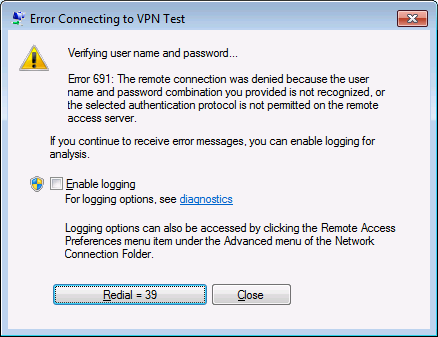Featured
Table of Contents
Guide To The Virtual Private Network (Vpn) - Student Services
The Routing and Remote Access snap-in lives within the Microsoft Management Console, known as the MMC. There are numerous ways to access the MMC. You can choose the console from the Start menu's Programs choices, within the Administrative Tools folder within Windows server's Control Panel or by typing mmc at a command timely.
As Tech, Republic's Brandon Vigliarolo demonstrates within his video at the start of this article, the Solutions console displays the status of the Routing and Remote Gain access to entry. From within the Services console and with the Routing and Remote Access entry highlighted, you can click Start the Service or right-click the entry and choose Restart.
Sometimes the VPN customer and VPN server are set to utilizing various authentication techniques. Verify whether an authentication error is the issue by opening the server console. Yet another technique of accessing the MMC is to type Control+R to open a command timely in which you can type mmc and hit Go into or click OK.
If the entry isn't present, click File, select Add/Remove Snap-in, select the Routing and Remote Gain access to option from the options and click Add, then OK. With the Routing and Remote Access snap-in included, right-click on the VPN server and click Characteristics. Review the Security tab to validate the authentication approach.
Troubleshooting And Known Issues
Guarantee the VPN client is set to the authentication technique specified within the Security tab. Normally the items simply evaluated are responsible for the majority of VPN connection rejection mistakes.
Each Web-based VPN connection usually uses two different IP addresses for the VPN client computer system. This is the IP address that's used to develop the initial TCP/IP connection to the VPN server over the Internet.
This IP address normally has the exact same subnet as the regional network and thus permits the client to communicate with the local network. When you set up the VPN server, you should configure a DHCP server to appoint addresses to clients, or you can create a bank of IP addresses to appoint to customers straight from the VPN server.


If this alternative is selected and the effective remote access policy is set to enable remote gain access to, the user will be able to attach to the VPN. Although I have actually been unable to re-create the scenario personally, I have heard reports that a bug exists in older Windows servers that can cause the connection to be accepted even if the efficient remote access policy is set to reject a user's connection.
How To Fix A Vpn Not Working On Your Iphone Or Ipad

Another typical VPN problem is that a connection is effectively developed however the remote user is unable to access the network beyond the VPN server. By far, the most typical cause of this issue is that approval hasn't been given for the user to access the entire network. To permit a user to access the whole network, go to the Routing and Remote Access console and right-click on the VPN server that's having the problem.
At the top of the IP tab is an Enable IP Routing check box. If this check box is made it possible for, VPN users will have the ability to access the rest of the network, assuming network firewalls and security-as-a-service settings permit. If the checkbox is not selected, these users will have the ability to access only the VPN server, but absolutely nothing beyond.
For example, if a user is calling directly into the VPN server, it's typically best to set up a static path in between the customer and the server. You can configure a fixed route by going to the Dial In tab of the user's properties sheet in Active Directory Users and Computers and selecting the Apply A Fixed Route check box.
Click the Add Route button and after that go into the destination IP address and network mask in the space supplied. The metric need to be left at 1. If you're utilizing a DHCP server to appoint IP addresses to clients, there are a couple of other problems that could cause users not to be able to go beyond the VPN server.
Technical Troubleshooting Tips
If the DHCP server assigns the user an IP address that is currently in use somewhere else on the network, Windows will discover the conflict and avoid the user from accessing the remainder of the network. Another common issue is the user not receiving an address at all. The majority of the time, if the DHCP server can't appoint the user an IP address, the connection won't make it this far.
If the client is designated an address in a range that's not present within the system's routing tables, the user will be unable to navigate the network beyond the VPN server. Make sure the resources the user is attempting to access are really on the network to which the user is connecting.
A VPN connection to the other subnet might, in fact, be required. A firewall software or security as a service solution could also be to blame, so don't forget to evaluate those services' settings, if such components exist between the VPN server and the resources the user looks for to reach.
The first possibility is that a person or more of the routers included is performing IP package filtering. IP package filtering could avoid IP tunnel traffic. I suggest inspecting the client, the server and any machines in between for IP packet filters. You can do this by clicking the Advanced button on each maker's TCP/IP Properties sheet, selecting the Options tab from the Advanced TCP/IP Settings Residence sheet, choosing TCP/IP Filtering and clicking the Characteristics button.
Latest Posts
The Best Vpns For Small And Home-based Businesses
The Best Vpns To Protect Yourself Online
The Best Vpn App For Mobile Devices In 2023